Currently Reading






Find me elsewhere:
Halloween Book Bingo 2016: Eleventh Update and BINGO No. 11

Home stretch – 24 books down, 1 to go!
Bingo No. 11 – the Books:
Magical Realism – Isabel Allende: La casa de los espíritus (The House of the Spirits)
Isabel Allende's breakout success and still one of my favorite novels by her (surpassed only by Of Love and Shadows): A multigenerational allegory on the story of her native Chile – seen through the eyes of the novel's female protagonists, the women of the Trueba clan; particularly the paranormally gifted Clara, as well as the Patrón, Don Esteban Trueba (Clara's husband and the father and grandfather of their daughter Blanca and granddaughter Alba) – and at the same time, Allende's attempt to come to terms with her own family's involvement in Chile's history. A gorgeously lyrical narrative, as expansive as the plains surrounding the Trueba estate of Tres Marías; at times harsh, at other times, delicate, and a paen to the will to survive and to live exhibited by the Trueba women in the face of all adversity. Of all books labeled as exponents of magical realism, to me this one, alongside Gabriel García Márquez's Love in the Time of Cholera, is the quintessential magical realist novel.
Ghost Stories and Haunted Houses – Henry James: The Turn of the Screw 
A perfectly-timed, profoundly unnerving fireside tale of a young governess's experiences on her very first job, guarding two children – a boy of ten and a girl of eight – who appear charming and innocent initially, but are slowly and bit by bit revealed to be possessed by the evils spirits of their former governess and her paramour, the household's former manservant. By Henry James's standards rather short and concise (even in its language), and all the more memorable for its blend of succinct language and masterfully crafted, eery atmosphere.
Genre: Mystery – Peter May: The Blackhouse
Book 1 of May's Lewis Trilogy; a darkly atmospheric tale of childhood ghosts rearing their ugly heads to bring down the lives of a group of former schoolmates some 30+ years later; set on the northern end of the largest and northernmost of Scotland's Outer Hebrides islands, the Isle of Lewis. May does an excellent job of bringing to life both the starkness of the Lewis landscape and nature and its dramatic coastline, and the inner demons haunting his protagonist (DI Fin Macleod, on secondment from Edinburgh CID because a recent murder on Lewis bears hallmark similarities to a case he's working on in Edinburgh) and Fin's former schoolmates, one of whom – a much-feared bully – turns out to be the victim of this latest murder.
The story is told in the third person when moving in the present and in the first person when revisiting Fin's and his schoolmates' past; something I ordinarily don't much care for and which almost threw me at the beginning of the book. But here I stopped minding less than halfway through the narrative, and I'll admit that it did provide for a clear line of distinction between past and present.
Warning: The story's central episode revolves around the annual trip that a group of Lewis men take to a rock/island some 40+ miles north of Lewis in the North Atlantic named Sula Sgeir (or An Sgeir, as it's referred to here) to hunt and kill a total of 2,000 gannet chicks (locally known as gugas). The killing and curing of the gugas is described in unflinching detail, which animal lovers may find disturbing (I know I did): my feeling is that the author wants readers to experience revulsion for the hunt while also exploring the mindset of the hunters and the place which the hunt occupies in local society today ... in addition to which, as I said, the An Sgeir trip operates as the major catatlyst in the book's narrative arc.




Northern Isle of Lewis (photos mine)
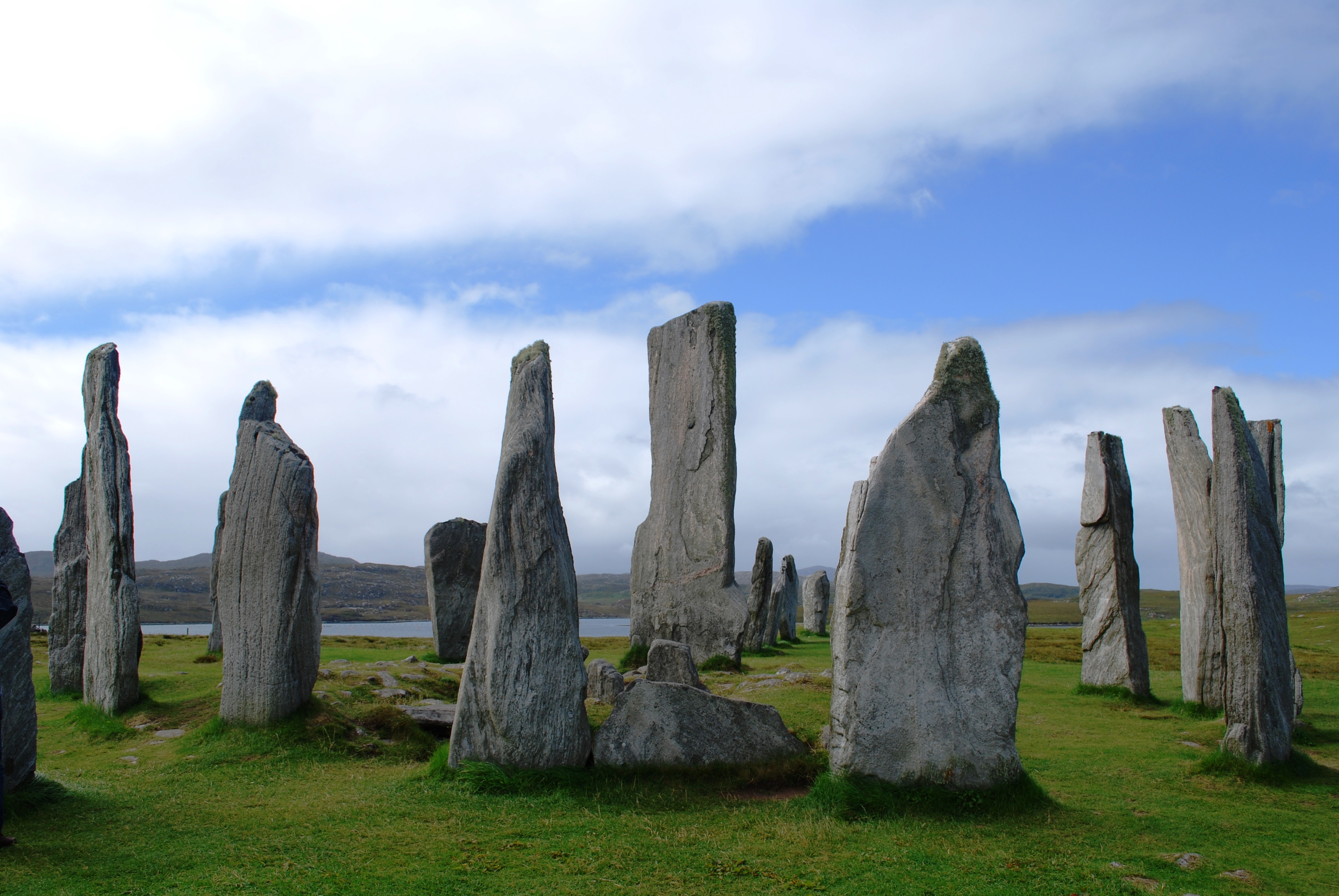

Isle of Lewis: The Standing Stones of Calanais (Callanish) (photos mine)


Sula Sgeir (images from Wikipedia)



Young gannets (gugas) (images from Wikipedia)
Locked Room Mystery – Gaston Leroux: Le mystère de la chambre jaune (The Mystery of the Yellow Room)
![]()
This book is billed as the first-ever locked room mystery, which isn't entirely correct, as by the time it was published (1907), there already were several very well-known mysteries relying on the same feature (Edgar Allan Poe's Murders in the Rue Morgue, as well as Arthur Conan Doyle's Sign of Four and The Speckled Band (see below)), even though their solutions are different than this book's. The Murders in the Rue Morgue and The Speckled Band are, interestingly, expressly referenced here, and it is quite obvious that Leroux was a huge admirer of Sherlock Holmes and his creator, to the point that I couldn't make up my mind to the very end to what extent he was copycatting and to what extent he was paying hommage. By and large it's an enjoyable read, though, and I can well believe that the book's contemporaneous readership considered it a novelty and was seriously wowed by its solution. (Side note: Grammar nuts reading this in French will have the rare joy of finding the chief narrative tense to be the first person plural passé simple, which greatly added to my personal reading pleasure.)
Supernatural – Arthur Conan Doyle: The Sussex Vampire![]()
Sherlock Holmes receives an urgent request for help and advice from a former acquaintance of Dr. Watson's, who, having recently returned from an extended business-related stay in Peru (from where he has also imported his new wife) has been shocked into believing he has married a vampire, upon finding his wife sucking the neck of their newborn son – with a pinprick mark on the baby's neck and traces of fresh blood on his wife's lips providing seemingly undeniable evidence as to the lady's actions. Sherlock Holmes, of course, derides the belief in vampires as "pure lunacy," insists that "[t]his agency stands flat-footed upon the ground, and there it must remain. The world is big enough for us. No ghosts need apply" – and proceeds too demonstate, applying his trademark reasoning, that there is a perfectly logical (though rather tragic) explanation for the things that his client has witnessed.



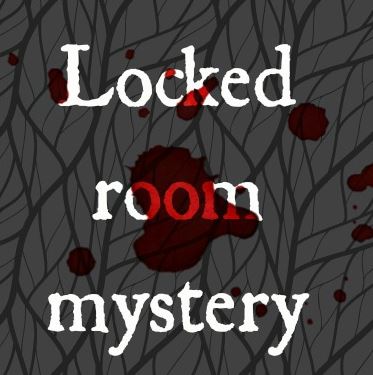

Currently Reading:


Finished – Update 1:
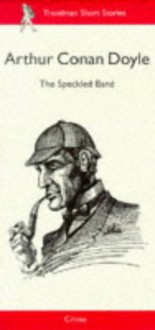





Creepy Crawlies – Arthur Conan Doyle: The Adventure of the Speckled Band
Supernatural – Arthur Conan Doyle: The Sussex Vampire
Set in New England – Shirley Jackson: The Lottery
Finished – Update 2:




Ghost Stories and Haunted Houses – Henry James: The Turn of the Screw
Read by Candlelight or Flashlight – E.T.A. Hoffmann: Das Fräulein von Scuderi (Mademoiselle de Scuderi) (read by flashlight, in bed)
Finished – Update 3:




Young Adult Horror – Oscar Wilde: The Canterville Ghost
Pumpkin – Washington Irving: The Legend of Sleepy Hollow
Finished – Update 4:


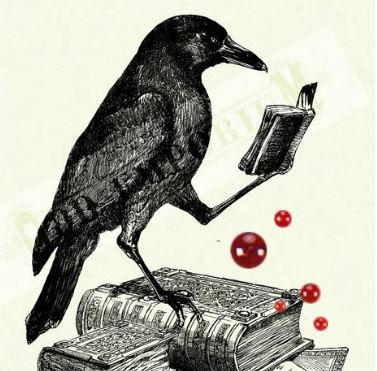

Free Space – Dashiell Hammett: The Dain Curse
Set on Halloween – Agatha Christie: Hallowe'en Party (novel)
Finished – Update 5:




Scary Women (Authors) – Daphne Du Maurier: Jamaica Inn
Classic Horror – E.T.A. Hoffmann: Der Sandmann (The Sandman)
Finished – Update 6:


Locked Room Mystery – Gaston Leroux: Le mystère de la chambre jaune (The Mystery of the Yellow Room)
Finished Update 7:
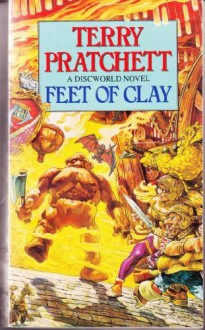

Vampires vs. Werewolves – Terry Pratchett: Feet of Clay (Night Watch novel)
Finished – Update 8:







Witches – Terry Pratchett / Neil Gaiman: Good Omens
Black Cat – Frances & Richard Lockridge: The Norths Meet Murder
It Was a Dark and Stormy Night – Agatha Christie: And Then There Were None
Finished – Update 9:






Magical Realism – Isabel Allende: La casa de los espíritus (The House of the Spirits)
Genre: Horror – Mary Shelley: Frankenstein
Reads with BookLikes Friends – Arthur Conan Doyle: The Hound of the Baskervilles






Gothic – Horrace Walpole: The Castle of Otranto
"Fall" into a Good Book – Edgar Allan Poe: The Fall of the House of Usher
Full Moon – James D. Doss: White Shell Woman
Finished – Update 10:


Diverse Authors Can Be Spooky Fun – Sherman Alexie: Reservation Blues
Finished – Update 11:


Genre: Mystery – Peter May: The Blackhouse
TA's Reading List:
![]() Read by Candlelight or Flashlight – E.T.A. Hoffmann: Das Fräulein von Scuderi (Mademoiselle de Scuderi) (novella)
Read by Candlelight or Flashlight – E.T.A. Hoffmann: Das Fräulein von Scuderi (Mademoiselle de Scuderi) (novella)
![]() Magical Realism – Isabel Allende: La casa de los espíritus (The House of the Spirits) (novel)
Magical Realism – Isabel Allende: La casa de los espíritus (The House of the Spirits) (novel)
![]() Witches – Terry Pratchett: Wyrd Sisters (or possibly Terry Pratchett / Neil Gaiman: Good Omens (novel)
Witches – Terry Pratchett: Wyrd Sisters (or possibly Terry Pratchett / Neil Gaiman: Good Omens (novel)
![]() Genre: Horror – Edgar Allan Poe: The System of Dr. Tarr and Professor Fether (short story); alternately E.A. Poe: The Tell-Tale Heart or The Masque of the Red Death (also short stories). Change of plan: Mary Shelley: Frankenstein.
Genre: Horror – Edgar Allan Poe: The System of Dr. Tarr and Professor Fether (short story); alternately E.A. Poe: The Tell-Tale Heart or The Masque of the Red Death (also short stories). Change of plan: Mary Shelley: Frankenstein.
![]() Black Cat – Ngaio Marsh: Black as He's Painted (novel) (black cat central to the story and therefore also black cat on the cover of the stand-alone paperback edition) change of plan: Frances & Richard Lockridge: The Norths Meet Murder (novel)
Black Cat – Ngaio Marsh: Black as He's Painted (novel) (black cat central to the story and therefore also black cat on the cover of the stand-alone paperback edition) change of plan: Frances & Richard Lockridge: The Norths Meet Murder (novel)
![]() Diverse Authors Can Be Spooky Fun – Possibly Edwidge Danticat (ed.): Haiti Noir (short story anthology); otherwise TBD Settled on: Sherman Alexie: Reservation Blues.
Diverse Authors Can Be Spooky Fun – Possibly Edwidge Danticat (ed.): Haiti Noir (short story anthology); otherwise TBD Settled on: Sherman Alexie: Reservation Blues.
![]() Ghost Stories and Haunted Houses – Henry James: The Turn of the Screw (novella)
Ghost Stories and Haunted Houses – Henry James: The Turn of the Screw (novella)
![]() Young adult horror – Oscar Wilde: The Canterville Ghost (novella)
Young adult horror – Oscar Wilde: The Canterville Ghost (novella)
![]() Scary Women (Authors) – Daphne Du Maurier: Jamaica Inn (novel)
Scary Women (Authors) – Daphne Du Maurier: Jamaica Inn (novel)
![]()
![]() Reads with BookLikes Friends – Arthur Conan Doyle: The Hound of the Baskervilles (novel)
Reads with BookLikes Friends – Arthur Conan Doyle: The Hound of the Baskervilles (novel)
![]() Grave or Graveyard – Edgar Allan Poe: The Cask of Amontillado (short story); alternately Ngaio Marsh: Grave Mistake (novel) or Umberto Eco: The Prague Cemetery
Grave or Graveyard – Edgar Allan Poe: The Cask of Amontillado (short story); alternately Ngaio Marsh: Grave Mistake (novel) or Umberto Eco: The Prague Cemetery
![]() Genre: Mystery – Peter May: The Blackhouse (novel)
Genre: Mystery – Peter May: The Blackhouse (novel)
![]() Free Space – Dashiell Hammett: The Dain Curse
Free Space – Dashiell Hammett: The Dain Curse
![]() Gothic – Horrace Walpole: The Castle of Otranto (novel)
Gothic – Horrace Walpole: The Castle of Otranto (novel)
![]() Creepy Crawlies – Arthur Conan Doyle: The Adventure of the Speckled Band (short story)
Creepy Crawlies – Arthur Conan Doyle: The Adventure of the Speckled Band (short story)
![]() "Fall" into a Good Book – Edgar Allan Poe: The Fall of the House of Usher (short story)
"Fall" into a Good Book – Edgar Allan Poe: The Fall of the House of Usher (short story)
![]() Locked Room Mystery – Gaston Leroux: Le mystère de la chambre jaune (The Mystery of the Yellow Room) (novel)
Locked Room Mystery – Gaston Leroux: Le mystère de la chambre jaune (The Mystery of the Yellow Room) (novel)
![]() It Was a Dark and Stormy Night – Agatha Christie: And Then There Were None (novel)
It Was a Dark and Stormy Night – Agatha Christie: And Then There Were None (novel)
![]() Set in New England – Shirley Jackson: The Lottery (short story)
Set in New England – Shirley Jackson: The Lottery (short story)
![]() Full Moon – James D. Doss: White Shell Woman (novel) (full moon on the cover, and the protagonist / investigator is called Charlie Moon); alternately Dennis Lehane: Moonlight Mile
Full Moon – James D. Doss: White Shell Woman (novel) (full moon on the cover, and the protagonist / investigator is called Charlie Moon); alternately Dennis Lehane: Moonlight Mile
![]() Vampires vs. Werewolves – Terry Pratchett: Feet of Clay (Night Watch novel)
Vampires vs. Werewolves – Terry Pratchett: Feet of Clay (Night Watch novel)
![]() Supernatural – Arthur Conan Doyle: The Sussex Vampire (short story)
Supernatural – Arthur Conan Doyle: The Sussex Vampire (short story)
![]() Classic Horror – E.T.A. Hoffmann: Der Sandmann (The Sandman) (short story)
Classic Horror – E.T.A. Hoffmann: Der Sandmann (The Sandman) (short story)
![]() Pumpkin – Washington Irving: The Legend of Sleepy Hollow (short story)
Pumpkin – Washington Irving: The Legend of Sleepy Hollow (short story)
![]() Set on Halloween – Agatha Christie: Hallowe'en Party (novel)
Set on Halloween – Agatha Christie: Hallowe'en Party (novel)









 12
12  12
12 